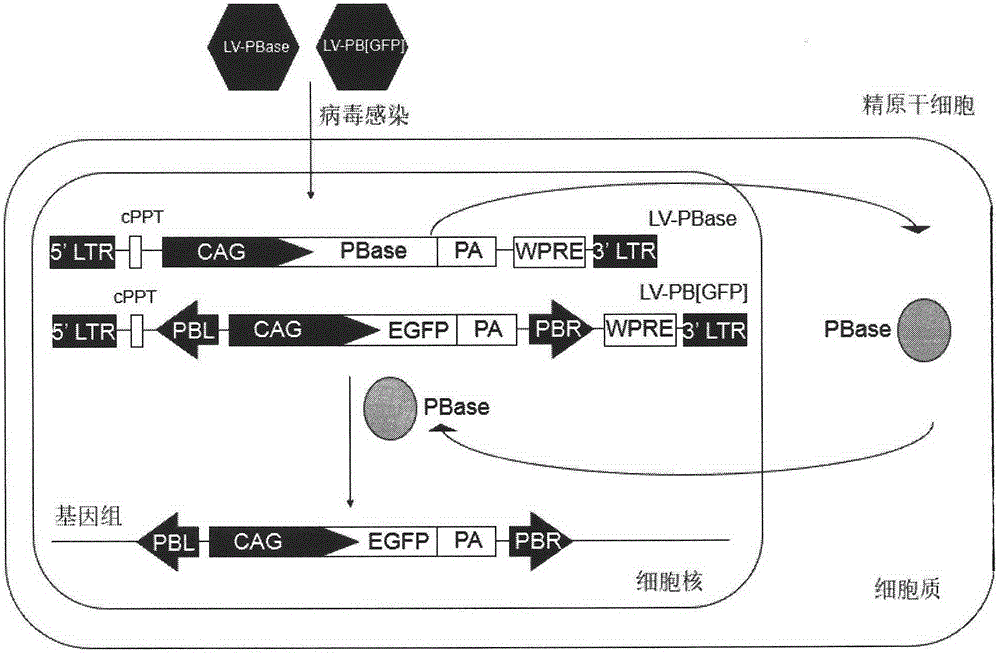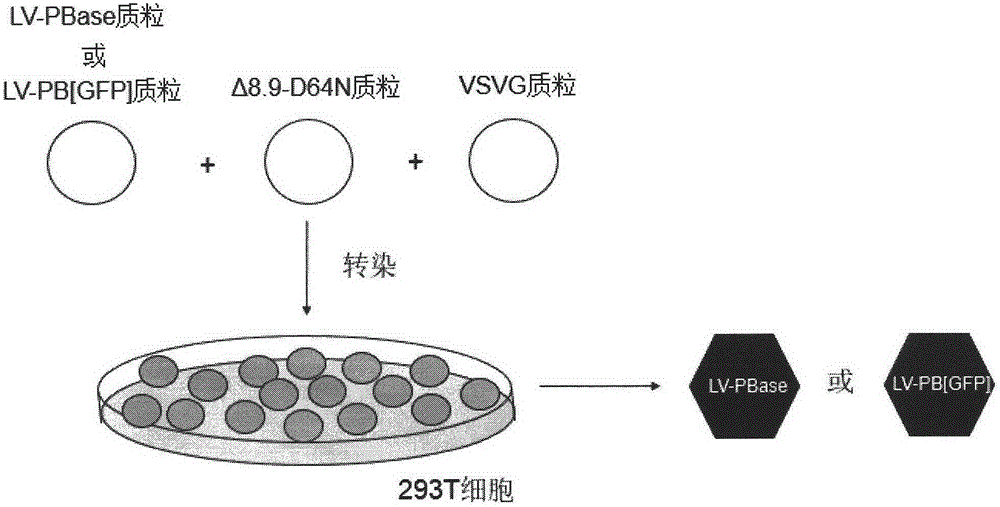Method of introducing random insertion mutation to genome of in-vivo spermatogonial stem cells
A spermatogonial stem cell, random insertion technology, applied in genetic engineering, plant genetic improvement, botanical equipment and methods, etc., can solve problems such as inability to do so
- Summary
- Abstract
- Description
- Claims
- Application Information
AI Technical Summary
Problems solved by technology
Method used
Image
Examples
Embodiment Construction
[0023] The invention provides a non-integrating lentiviral composite vector carrying a piggyBac transposon system, a preparation method thereof, and a method for introducing random insertion mutations into spermatogonial stem cell genomes using the composite vector. The invention can be used to efficiently prepare non-human gene mutant animals.
[0024] Below in conjunction with specific examples, the key steps of the preparation and application of the present invention are further illustrated.
[0025] 1. Non-integrating lentiviral vector.
[0026]Lentivirus belongs to retrovirus, represented by human immunodeficiency virus (HIV). Human immunodeficiency virus type 1 (HIV-1)-based lentiviral vectors are currently in their fourth generation. The first generation is a replication-deficient HIV-1 lentiviral vector that can only infect CD4 T cells, and there is a risk of producing wild-type HIV. The second-generation lentivirus vector adopts the envelope protein of other viruse...
PUM
 Login to View More
Login to View More Abstract
Description
Claims
Application Information
 Login to View More
Login to View More - R&D
- Intellectual Property
- Life Sciences
- Materials
- Tech Scout
- Unparalleled Data Quality
- Higher Quality Content
- 60% Fewer Hallucinations
Browse by: Latest US Patents, China's latest patents, Technical Efficacy Thesaurus, Application Domain, Technology Topic, Popular Technical Reports.
© 2025 PatSnap. All rights reserved.Legal|Privacy policy|Modern Slavery Act Transparency Statement|Sitemap|About US| Contact US: help@patsnap.com



